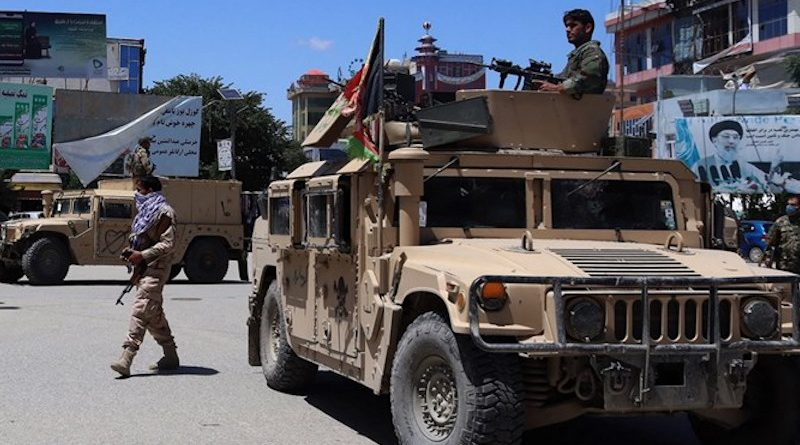
The Taliban has seized an unprecedented amount of U.S. and Western weaponry, representing a significant expansion in the organization’s military capacity and combat capabilities.
For over two decades, the United States has provided the Afghanistan National Defense and Security Forces with over $20 billion in weaponry, hardware, and equipment. However, the U.S. failed to produce a sustainable and effective Afghan military.
As seen over recent weeks, most of Afghanistan’s security forces withdrew from their positions and bases without a single shot fired during the Taliban’s rapid advance, leaving behind large quantities of US-supplied weaponry.
While exact figures are not publicly known, estimates indicate that the Taliban is now in possession of approximately 300,000 infantry weapons, including M16A4 rifles, M240 machine guns, and M4 carbines; 160,000 pieces of communication equipment; 16,000 night-vision goggles; 2,000 armored vehicles, including M117 Armored Security Vehicles, MaxxPro mine proof vehicles, and Humvees; and lastly up to 40 aircraft, potentially including UH-60 Blackhawks, MD-530 helicopters, ScanEagle drones, and A-29 Super Tucano light ground attack aircraft.
The Taliban is now better equipped in terms of armaments than the Islamic State in Iraq and Syria (ISIS) was when the Iraqi Army began its withdrawal from Mosul in 2014. In that situation, the US-supplied Iraqi Army fled from a much smaller group of militants, leaving behind thousands of small arms and armored vehicles, which the Islamic State promptly utilized.
One of the more immediate concerns is how the Taliban will utilize less sophisticated weaponry such as night-vision goggles and captured infantry weapons, mortars, and artillery pieces. The Taliban now possesses a qualitative advantage over any resistance group that could coalesce in the country, such as those of the historically anti-Taliban stronghold of Panjshir Valley, northeast of Kabul.
However, US officials fear that the Taliban’s possession of US military equipment may have further negative implications, both within and beyond Afghanistan’s borders. Unlike conventional militaries, the Taliban does not possess a clear top-down command structure. Much of it is structured horizontally, and operates as a network of militias and fronts led by military commanders.
Although to operate as part of the Taliban, militias must be recognized by and not act against the Leadership Council, their commanders still wield an extraordinary degree of autonomy. It has become a guiding principle of Taliban leadership to grant its commanders a significant degree of autonomy, including day-to-day decision-making, to avoid rifts and burdensome administration.
This structure of command makes it entirely feasible for equipment seized from Afghan security forces to be siphoned off and sold to different militant groups and not kept for use within the organization as a whole.
Furthermore, to attain additional revenue, the Taliban may be inclined to sell its newly acquired weaponry to hostile actors and on the black market. Partner militant organizations to the Taliban such as the Haqqani Network possess the capability to smuggle weapons out of Afghanistan and to the Middle East, Africa, and even Southeast Asia.
The Taliban may transfer military grade communication equipment, US-manufactured small arms, and night vision goggles to non-state actors such as Al- Qaeda, threatening the security of U.S. and allied security forces, and undermining regional stability.
But luckily for the United States, much of the Taliban’s new stockpile of military vehicles requires fairly sophisticated maintenance requirements and is unlikely to remain battle ready over the long term. The Afghan military depended heavily on maintenance and technical support from U.S. and foreign contactors.
For example, the Afghan military’s entire fleet of UH-1 Blackhawks was maintained by foreign contractors. However, for the Taliban’s nascent arsenal of armored vehicles, the Islamist organization possesses such a great amount that it becomes possible to cannibalize the spare parts of some vehicles to keep others running.
